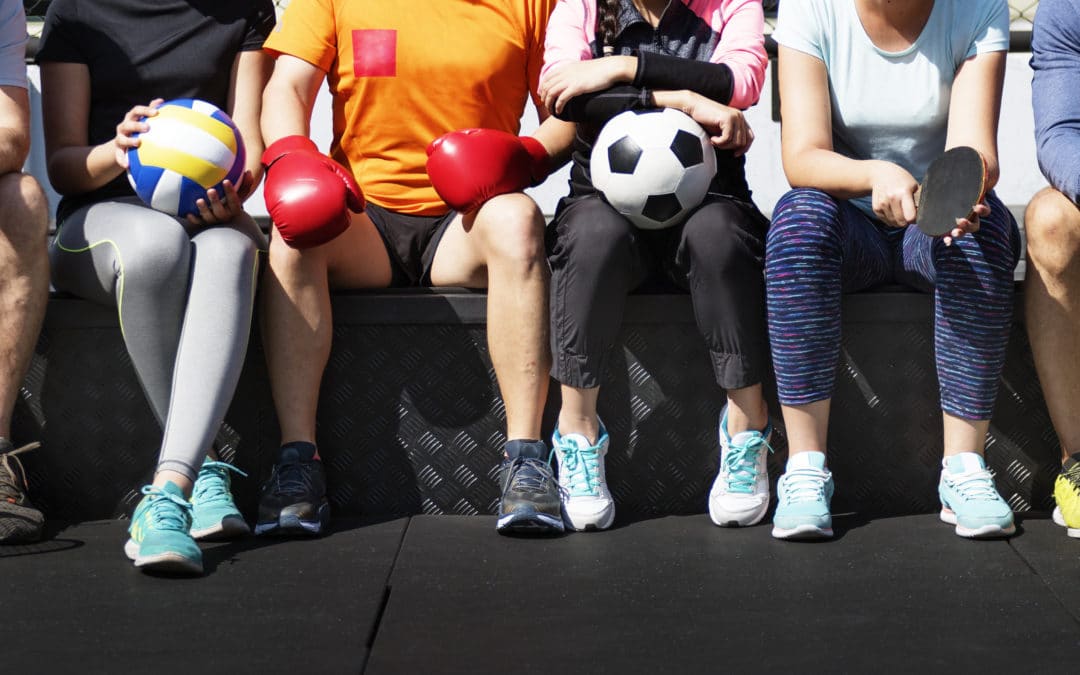Keep Sports Injuries from Tripping Up Your Goals
If you’re getting out and getting active, you likely have a goal of some sort.
It doesn’t have to be hitting the pros or working your way to the Dallas Marathon. You could just be someone who wants to get out and get moving more than you currently are, and that’s great!
But whether you are engaged in a serious training regimen or just picking up some games of basketball on the weekends, it pays to protect yourself against sports injuries—especially to your feet and ankles. Few things can sideline your ambitions in a more frustrating way than developing heel pain or other maladies.
It doesn’t matter whether you’re a seasoned vet or just starting out in your activities—sports injuries can happen to anyone!
The Threat of Overuse Injuries
Our bodies are amazing organic machines. Intense use breaks them down, and they literally rebuild themselves into something that can better handle the demands. That’s how being faster and getting stronger works!
However, our bodies need to be treated with patience for proper conditioning. If we push ourselves too hard all at once, or don’t give our bodies enough time to recover and rebuild, we risk overloading ourselves with strain and giving ourselves a sports injury.
Our feet can be especially vulnerable to overuse sports injuries. They already endure significant forces just in our daily movement. Add repetitive stresses such as running, or sports such as football or basketball that demand quick action, and it is really no surprise that injuries are common to this area.
Here are just a few common overuse injuries that can develop in the foot and ankle:
Plantar Fasciitis
A common form of heel pain, plantar fasciitis is strain and injury to the thick band of tissue that runs beneath the foot, from the heel bone to the base of the toes. Pain tends to be worst first thing in the morning or after long periods of inactivity.
Neuromas
A neuroma is the swelling of nerve tissue in response to pressure and irritation. In sports, it tends to be common in runners and occur at the base of the toes.
Achilles Tendinitis
A cause of pain more toward the back of the heel, this is inflammation of the tendon that connects the heel bone to the calf muscle.
Stress Fractures
In contrast to a fracture that splits all the way through a bone, a stress fracture develops along the surface. It occurs when stress against the bone weakens it without providing any opportunities to rebuild.
It should be noted that you don’t necessarily have to be playing sports or working out to suffer from any of the above conditions. However, exceeding your body’s limits can make these injuries much more likely.
The good news is that, a lot of the time, overuse injuries can be prevented by taking a measured stance toward increasing your workouts. A good general rule of thumb is to increase your intensity no more than 10 percent per week. If you are currently running 10 km per week, for example, you should not increase to any more than 11 km the next week.
Guidelines are no substitute for listening to your body, though. If you are feeling too much strain from an increase in an activity, do not be afraid to dial back and work yourself up more gradually. Taking time to warm up and stretch before engaging in any period of activity is also significantly helpful in avoiding injury.
Sprains and Fractures
Sometimes, no matter what you try, you’re just going to get hurt. This is especially true when your foot gets planted roughly or something just basically collides with you.
Sprains and fractures tend to happen when a sudden force overwhelms the strength of a bone or ligament. Pain is immediate and intense, which is your cue to stop whatever you’ve been doing immediately!
Mild sprains can often be treated at home, but you should still give us a call to let us know what happened. Sprains that don’t heal correctly can lead to ankle weakness, chronic pain, and more sprains down the road. We want to make sure recovery goes as smoothly as possible for you!
Sometimes it can be difficult to determine whether you have a very bad sprain or a fracture. There’s a very simple action to take when this happens: don’t even try to figure it out yourself. Stay off your injured foot as best you can and call us right away!
Treatments for Sports Injuries
If you have suffered a sports injury to your foot or ankle, our first approach is always conservative treatment when possible.
Of course, a fracture or a bad sprain might require more intense treatment, but most cases of heel pain and other overuse injuries tend to respond well to more conservative methods.
Rest and ice are perhaps the most traditional forms of treatment. In some cases, we might also recommend injections to reduce pain and inflammation, or splints to reduce strain in certain needed areas.
After about a month of initial treatments, we will re-evaluate your condition and recommend changes, if needed. Physical therapy to build strength and stability may be suggested, or a shift in the use of splints. If an abnormal foot structure is contributing to excess stress in areas of your feet, custom-made orthotics might also be prescribed.
Laser therapy is an advanced treatment option that can relieve pain and inflammation by enhancing the body’s own natural healing processes. It has been used in many professional sports circles to accelerate the healing of many soft tissue injuries, and it’s an option we are proud to offer to all our patients.
Conservative methods frequently work at getting patients back to full strength. If they don’t—and only when there are no other reasonable options—is when surgery is brought into consideration. We will explain all the pros and cons of surgery for finding relief if it on the table.
Get Back in the Game
Texas Foot and Ankle Center wants to get all patients with sports injuries back to action as quickly and as safely as possible, equipping them with all they need to help prevent injuries in the future!
Give our office a call at (214) 660-0777 to schedule an appointment for any consistent pain or problems you are facing. You may also contact us via our online form, if you prefer.




